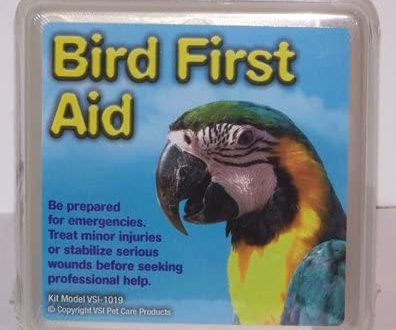
Six basic rules for caring for canaries
The appearance of a canary in the house is a great joy, because a cheerful feathered friend will entertain you with chirping and playful behavior. Fortunately, caring for canaries at home does not require much effort. It is enough to follow a few rules, which we will talk about today.
- Cell. In which cage should the bird be placed? Suitable cage size for a canary: 25-50 centimeters long, 20-50 centimeters wide, 35-50 centimeters high. The distance between the bars of the cage is from 1,2 to 1,4 centimeters. It is better to make a choice in favor of a rectangular design, so the feathered friend will be more spacious, it will be possible to move up and down, and to the sides. As for the material, stainless steel will last you the longest. It is important that the metal is not galvanized or painted, otherwise troubles cannot be avoided, because the birds love to sharpen their beaks on the bars of the cage. A wooden cage absorbs all odors, tolerates washing worse. But the cage tray is better to choose a plastic, retractable one, so it can be washed often without disturbing the bird in the cage.
- cell attributes. Let’s talk about the interior of the cell. The feeder and drinker can be attached to metal bars outside the cage – it will be convenient to add food if necessary. If the feeder is on one side of the cage, and the drinker is on the other, then this motivates the bird to move more. A bathing suit with water at room temperature can also be fastened outside the cage, where the door is. It is enough for a canary to bathe once a day, swim – remove the bathing suit, close the door of the cage. So the interior of the cage will not get wet. Do not forget about a perch for a bird, round perches with a thickness of no more than one and a half centimeters will do. If it is possible to make two or three perches in a cage, the distance between them should allow the feathered friend to open his wings when flying from one perch to another. The floor of the cage can be covered with special purified sand for bird cages. Such sand can be purchased at a pet store. Particles of ground shells in this sand will help the feathered pet to fill the lack of minerals in the body. You can offer your feathered friend to peck sand with shell rock from an additional feeder, and cover the floor of the cage with clean paper or paper towels (but not newspaper, printing ink will harm the pet). Provide the canary with fun toys, a mirror, a bell will do. A house inside a cage is also a good idea, the pet will have a personal space that will help him quickly adapt to new conditions.
- Home hygiene is an equally important question. If the bathing bowl, the drinking bowl needs to be washed daily, then twice a week it is necessary to wash the whole cage, clean all its interior decoration. At the time of cleaning, the pet is transplanted into another cage or released to fly around the room. The cage must not only be clean, but must also be in the right place. In a room with a cage for a canary, it should be quiet, the cage should not be placed on a window or within reach of direct sunlight. The bird should not be disturbed by drafts, constant noise from the street, the smell of tobacco or the smell of cooking food from the kitchen, as well as other pets living in the house. The canaries begin to chirp as the sun rises. If this worries you, you need to cover the cage with a bird with a dense cloth. So you can postpone the start of the canary’s performance for several hours, but you can not leave the cage covered for the whole day.

- Flying. We have already mentioned that the canary can and even needs to be released to fly around the room. But follow the safety precautions. Canaries are very curious, the bird is happy to explore all the nooks and crannies of the house. It is better to limit the pet’s flights to one room in which nothing poses a danger. Remove all small details like buttons, beads, so that the pet does not swallow them. Move shelving and cabinets tightly against the wall so that the pet does not accidentally get stuck in the gap between the wall and furniture. Curtain the windows, otherwise the bird runs the risk of hitting the glass. Hide fans, heaters, and other appliances. Make sure that the cat or other pet is not hiding to watch the bird from a secluded corner. A canary can fly up to 45 minutes a day without any problems. Wait until the feathered friend returns to the cage and close the door.
- Diet. The life expectancy of a canary at home is from seven to 18 years. The better the diet of your feathered friend, the healthier he will be and live longer. An excellent solution is to use ready-made grain feed as a basis. For the correct choice of food, we recommend consulting with a veterinarian. Specialized vacuum-packed canary food will keep fresh for a long time. The canary eats little, it is enough for the bird to give one and a half teaspoons of food with a slide a day. Balanced food contains all the substances necessary for the pet in the optimal ratio. What can I feed a canary in addition to the main food? At the pet store, you can buy ready-made treats for canaries in the form of sticks based on fruits and honey. You can hang additional small feeders the size of a thimble from the cage and pour honey into them, canaries love it very much. Canaries can be given grated zucchini, pumpkin, carrots, celery, cilantro, bell peppers, parsley, pears, apples, finely chopped dandelion leaves as a treat. Buy vegetables and fruits for canaries in the market, and not in the supermarket, where they try their best to prolong their freshness. Fruits, vegetables, greens will be a good delicacy for birds. But there are exceptions. Do not give canaries citrus fruits, onions, garlic, dill.
- Feather Care. There are some features of caring for a bird during molting. When canaries change plumage, they do not need to be limited in food intake. Birds eat more than usual, not because they hit a heavy weight, but because the body needs more strength. Make sure that the canary consumes a sufficient amount of liquid during molting. A chalk stone, as well as a cuttlefish shell, should always hang in a bird cage, regardless of molting. The bird pecks them little by little to make up for the lack of minerals. What can you feed a canary during molting so that new feathers are as bright as the old ones? Use grated carrots, beets as a top dressing. There are also special food or drink additives that will help the bird grow bright feathers, consult a veterinarian to choose the right remedy.

We sincerely hope that our recommendations have helped you understand the basic rules for caring for canaries. We wish your canaries to delight you with cheerful chirping for many years!





